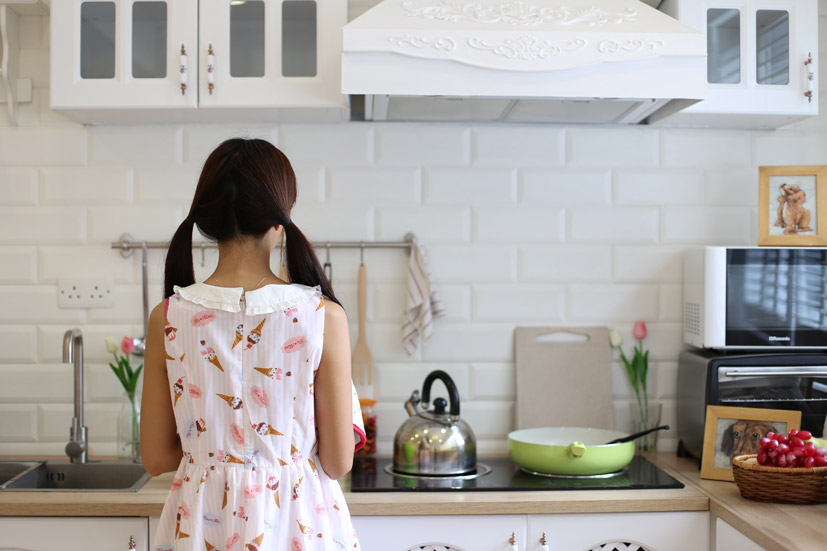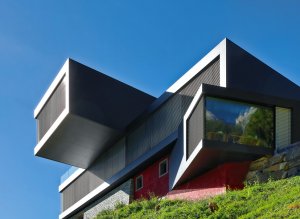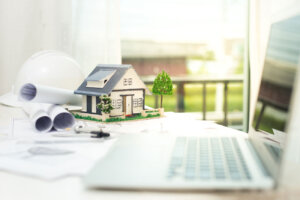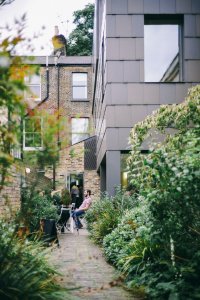Bored with white tiles? Give your splashback some wow with different materials and finishes.
Gone are the times when the aim of a splashback was purely practical – a tiny low tiled area behind the hob and sink to shield walls from stains and splatters. Today, the wide choice of various materials, colors, and finishes means your splashback can become a press release piece. It can even become the point of interest of your kitchen.
Kitchen designer Aimee Logan, decision-maker of Kitchen Living, said: “Our customers are very receptive considering new materials for his or her splashbacks. From the various colors and textures of quartz and granite to patterned tiles and printed glass, the splashback can become a feature that reflects their own style and brings a kitchen to life.”
While some people pick the identical material for countertop and splashback, others prefer to mix it up. “Our most well-liked choice could be a combination of either quartz or granite with a colored glass splashback,” said Ms. Logan.
Glass
Pros:
Glass may be a stylish solution for those wanting a sleek, streamlined look to their kitchen. There’s a good choice of bold colors and effects to decide on, including copper and bronzed yet as printed designs. With a glossy, high-polish finish, these splashbacks are made of toughened glass which makes them impact and warmth resistant. For a novel piece of functional art in your kitchen, consider commissioning a glass artist to form a bespoke splashback. You may choose anything from a cool hand-painted design to beautiful, fused glass.
Cons:
A glass splashback can scratch, so you wish to use caution when cleaning. It should be worth installing a bespoke glass splashback on top of an upstand to safeguard it. Professional tools are required to confirm neat finishing and an honest fit.
Stainless steel
Pros:
stainless-steel is immune to heat and hardwearing. Easy to wash and hygienic, it’s commonly utilized in professional kitchens. Chrome steel splashbacks can work well if you wish the economic vibe. They are available in sheets of flat steel that may be purchased pre-cut or made to live and glued over existing tiles or onto plasterboard.
Cons:
Bleach or common salt and acids of any kind can damage stainless-steel surfaces. Only ever clean with warm water and so dry with a soft cloth. Marks like fingerprints, food smudges, and water spills will show, so it requires a daily polish to stay pristine. Stainless steel isn’t scratch-resistant and might dent. It’s also relatively expensive compared to ceramic tiles.
Porcelain and ceramic tiles
Pros:
Tiles are heat, scratch, and waterproof. There’s an enormous choice of colors, sizes, and patterns available from white, subway tiles to hand-made rustic, Moorish style. You’ll be able to mix and match plain and patterned tiles to make a press release piece. Tiles are an economical option and easier to put in than most other materials.
Cons:
Tiles can become dirty and discolored if you don’t clean them regularly. Getting oil and stains out of white grout isn’t easy. Darker-colored grouts could also be worth investigating.
Granite
Pros:
A solid natural stone, granite is extremely hard-wearing, heat resistant, and straightforward to wash. Each slab is exclusive with colors and patterns indicating the region and geological conditions it absolutely was created in. Its sleek and delightful finish adds value to your home. Ideal for high-end, bespoke kitchen designs and fittings.
Cons:
Granite is porous, so at the risk of staining. Natural stone needs long-term care with resealing about once a year to forestall staining. Relatively expensive.
Quartz
Pros:
Quartz could be a popular choice for countertops and splashbacks – strong, hard-wearing, heat resistant, and splendid. There’s an enormous range of colors and patterns available. The finish is essential to the ultimate appearance of the splashback. Shiny, polished stone is often ideal for traditional and country-style kitchens while a honed, matt finish that’s more textured and understated may be a classy choice for an up-to-date space. Quartz is an engineered stone, so unlike granite doesn’t have to be sealed, polished, or reconditioned.
Cons:
Needs expert installation. Among the more costly splashback options
Corian
Pros:
Corian is an engineered stone like quartz but with a better percentage of resin and acrylic polymers. It offers great design flexibility because it will be molded into virtually any angle or curve, which suggests no join between the worktop and splashback. Available in a range of colors, it provides a sleek, seamless surface that’s non-porous, easy to scrub, stain-resistant, and sturdy.
Cons:
Corian isn’t heat resistant, so can’t be installed behind a gas hob. Corian may be a relatively expensive material.
Laminate
Pros:
Easy to stay clean and hardwearing, laminate is an inexpensive option. It comes in numerous colors and high definition finishes, including wood and stone-effect albeit without the identical luxury feel. Laminate panels are easy to cut-to-size and may create a seamless appearance when installed with laminate worktops.
Cons:
water-proof but not suitable for behind a gas hob due to the open flames. a niche of about 10cm is additionally recommended between laminate and other hobs.
Ultimately, your choice of fabric for a splashback will depend upon your style preferences and budget. The simplest ones not only look good but are practical – super-resistant to heat, water, and grease
